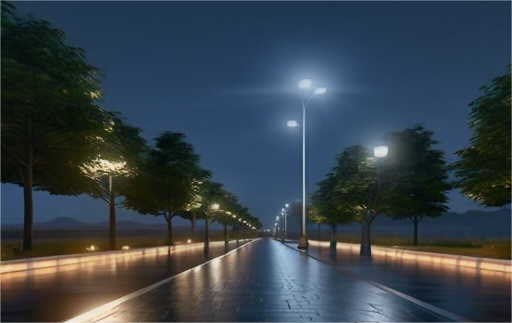In the relentless march towards smarter, more sustainable urban environments, smart street lighting stands as a beacon of innovation. This technological advancement not only enhances public safety and energy efficiency but also paves the way for a more interconnected and intelligent city infrastructure. As cities worldwide grapple with challenges ranging from energy conservation to crime prevention, smart street lights have emerged as a versatile solution that addresses multiple urban concerns simultaneously.
The Evolution of Street Lighting
Street lighting has come a long way since the days of gas lamps and incandescent bulbs. The introduction of LED technology marked a significant leap, offering longer lifespans, reduced energy consumption, and improved light quality. However, the true transformation occurred with the integration of Internet of Things (IoT) capabilities, transforming these illuminated sentinels into smart devices capable of real-time monitoring, adaptive lighting, and seamless communication with other city systems.
Key Features of Smart Street Lighting
Adaptive Lighting: Smart street lights utilize sensors to adjust their brightness based on ambient light levels, time of day, and even pedestrian or vehicular traffic. This not only enhances visibility but also optimizes energy usage, reducing costs and carbon emissions.
Remote Management: Through IoT platforms, city authorities can remotely control and monitor each light, facilitating instantaneous adjustments, fault detection, and maintenance scheduling. This eliminates the need for manual inspections, saving time and resources.
Public Safety Enhancement: Equipped with cameras and microphones, smart lights can aid in surveillance, crime detection, and emergency response. Real-time data transmission to control centers enables swift action in case of incidents.
Environmental Monitoring: Beyond illumination, these lights can also collect data on air quality, noise levels, and weather conditions, contributing to a comprehensive understanding of urban environments and informing policy decisions.
Integration with Smart City Ecosystems: Smart street lights serve as nodes within larger smart city networks, seamlessly integrating with traffic management systems, parking solutions, and public Wi-Fi networks, among others, to create a cohesive and efficient urban ecosystem.

Benefits for Cities and Communities
Energy Savings: By dynamically adjusting light output, smart street lighting can reduce energy consumption by up to 70% compared to traditional systems.
Improved Public Safety: Enhanced surveillance capabilities deter crime and improve response times during emergencies.
Enhanced Citizen Experience: Adaptive lighting improves visibility and comfort for pedestrians and drivers, while real-time environmental data informs residents about local conditions.
Sustainable Urban Development: The integration of smart lighting into broader smart city frameworks supports sustainable growth, fostering environmental protection and resource efficiency.
Challenges and Future Directions
Despite its potential, the widespread adoption of smart street lighting faces challenges such as high initial investment costs, data privacy concerns, and the need for interoperability standards across different systems. Addressing these issues requires collaboration between governments, private sectors, and technology providers to develop cost-effective solutions, establish robust data protection protocols, and promote standardization.
Looking ahead, the future of smart street lighting lies in its ability to further integrate with emerging technologies like 5G, artificial intelligence, and autonomous vehicles. This convergence will enable even more sophisticated functionalities, such as predictive maintenance, real-time traffic management, and personalized lighting experiences tailored to individual users' needs.
In conclusion, smart street lighting represents a pivotal step towards realizing the vision of smarter, safer, and more sustainable cities. As technology continues to evolve, these intelligent illuminators will play an increasingly central role in shaping the urban landscapes of tomorrow, illuminating not just the streets but also the path towards a brighter, more connected future.


 Why Choose Our Smart Poles?
Why Choose Our Smart Poles?
 Why Choose Our Smart Street Light Controller?
Why Choose Our Smart Street Light Controller?
 Gathering Talents on the New Silk Road, Advancing Together Toward the Future | Fangda Intelligent Control Honored as a Top 10 Case of 'Overseas Chines
Gathering Talents on the New Silk Road, Advancing Together Toward the Future | Fangda Intelligent Control Honored as a Top 10 Case of 'Overseas Chines
 Fonda had its own moment — celebrating 100 days of all-staff English check-ins.
Fonda had its own moment — celebrating 100 days of all-staff English check-ins.